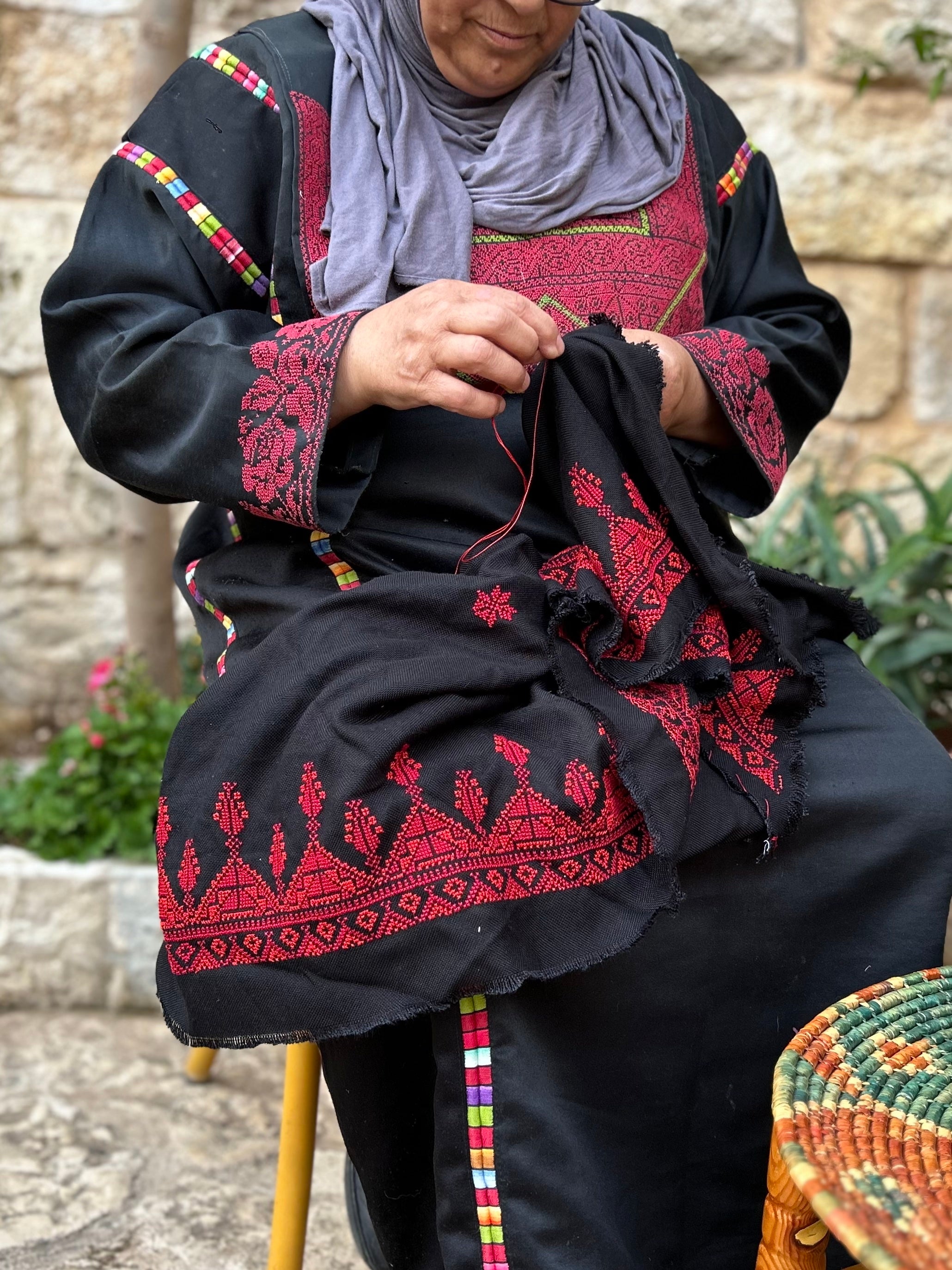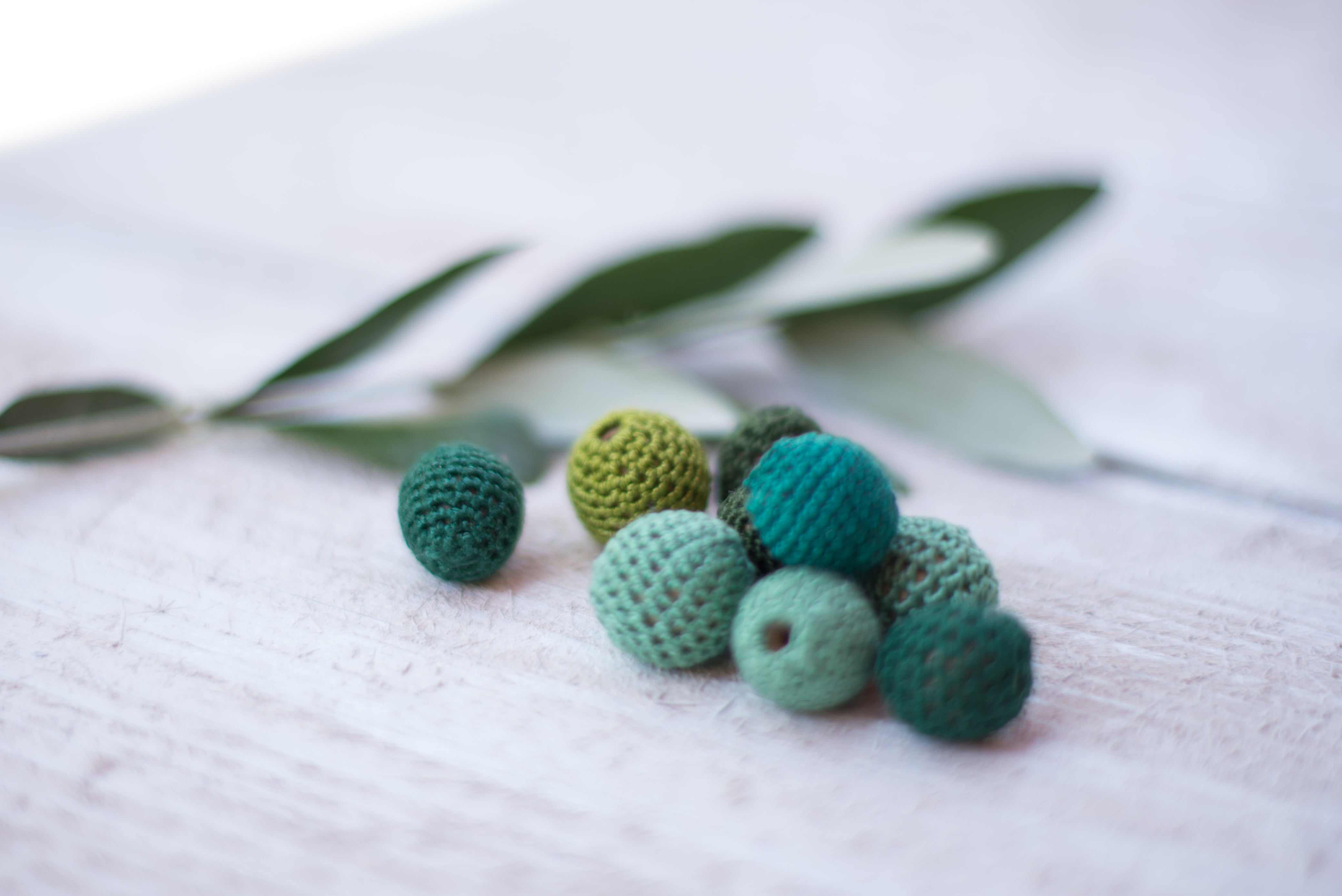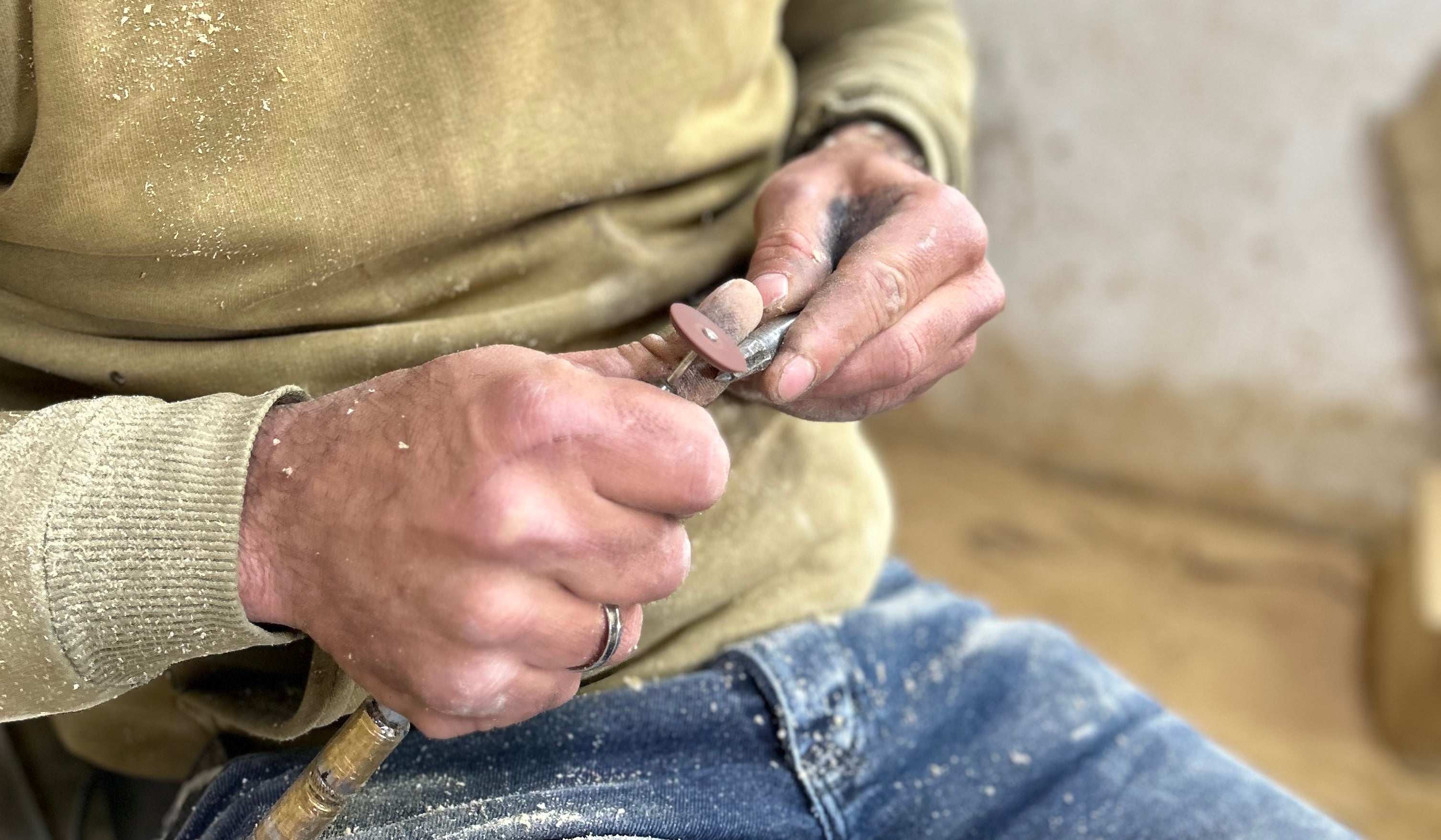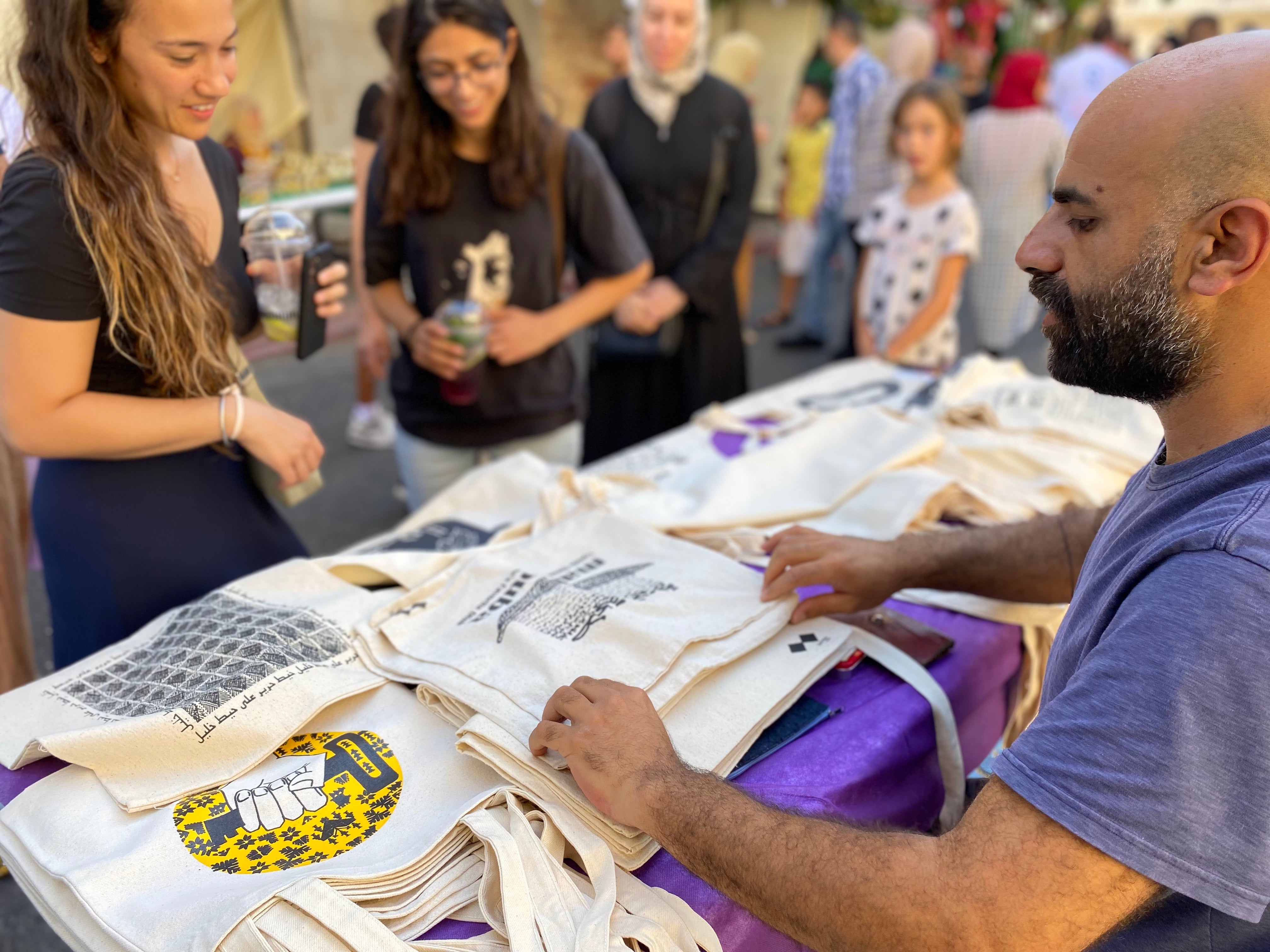
Decoding Tatreez: A Visual Language and Palestinian Artistic Expression
At the heart of Palestinian tatreez lies a rich tapestry of symbolism, with each motif carrying its own unique meaning. From geometric patterns representing unity and eternity to floral designs symbolizing nature and growth, every stitch in tatreez embodies a deeper connection to Palestinian heritage and identity, linking Palestinians' hearts and souls to their ancestral land, which they were violently displaced from in 1948, 1967 and 2023-2024. Tatreez serves as a tangible link to the land, with many motifs drawing inspiration from the Palestinian landscape, including olive trees, cypress leaves, palm trees and the iconic Palestinian keffiyeh as well as motifs from the animal world like birds and other examples of nature like vegetables and fruit.
Beyond its aesthetic appeal, tatreez serves as a visual language through which Palestinian women express their identities. Each stitch carries layers of meaning; traditionally these were embroidered onto clothes to reveal details about a woman's marital status, regional origin, and social standing.

The choice of colors, patterns, and motifs in tatreez can also indicate a woman's village of origin, textiles at the time available, and customs of color making in specific time periods. Each region in Palestine boasts its own unique embroidery style and traditions, allowing women to proudly display their regional identity through their attire.
Other fascinating examples include the city of Jaffa, where “the embroidered dress (...) has oranges, as the city is known for citrus. The shape of trees can be found in dresses of most Palestinian cities,” Dr. Sonia Abbas writes.
While tatreez, a specific kind of Palestinian embroidery, did famously become a form of political art and means of resistance after the Nakba 1948 its political purpose is not new and actually predates The Catastrophe. The British Mandate came with its own set of injustices as it was a foreign government dictating over the Palestinian people and meddling with their affairs. The tatreez thawab of those times reflect the position of resistance of the Palestinian women creating them, showcasing motifs that were developed as “direct response to occurrences confronting Palestinian women”, Silvia Ulloa.
In a more neutral observation, it is noticeable that the embroidery introduced through the British Mandate, is now in part employed in traditional tatreez design, as a form of naturally occurring cultural exchange. Thus it is observable how the straight geometric lines became more fluid and curved. A motif that was developed during that time is the “Officer´s Badge”, imitating British military's symbols of rank. The introduction of the “missiles” motif exemplifies the first hand experience of Palestinian women of the time with military equipment and their feelings pertaining to it.
“This particular tatreez traces its history back to the British Mandate. When the British colonized Palestine, they brought along their more advanced weapons and methods of modern warfare that Palestinians had no exposure to beforehand.The chest area of the dress is covered in missiles, and in the embroidered panels are upside-down trees telling of the destruction these weapons wrought. At the hemlines are embroidered flowers that represent areas the missiles haven’t touched.” Wafa Ghnaim explains in an article for Electronic Intifada.

Despite all of these fluid changes, tatreez remains deeply rooted in Palestinian heritage, serving as a testament to the resilience and creativity of Palestinian women. While specific motifs may be associated with particular villages or cities, tatreez is a fluid art form that transcends geographical boundaries and reflects the interconnectedness of Palestinian communities. This fluid historical genealogy underscores the importance of tatreez as a symbol of Palestinian identity and resistance.
TATREEZ TODAY: LIVING LEGACY
As we have come to understand tatreez as an ever-developing art form and visual language, we want to highlight the ways in which its strong legacy is celebrated and kept alive today—in Palestine as well as the diaspora. Constant fluidity and transformation are at the core of tatreez - much like at the core of Palestinians - ensuring its relevance and vitality through the ages. From its origins as a form of expression and identity, tatreez has evolved into a powerful symbol of resistance to injustice and a source of pride for those embracing their Palestinian heritage in the face of adversity.
Today, tatreez continues to thrive, with individuals and communities adding new layers to its rich tapestry. Diasporic Palestinians, facing unique challenges and experiences, infuse their stitches with personal narratives, enriching the collective story of Palestinian identity. Lina, from Linas Thobes, embodies this spirit of preservation and innovation, offering workshops and classes on Tatreez to inspire not only Palestinians but people of all ethnicities to partake in its legacy.
Here at Handmade Palestine, we are committed to uplifting local artists from Palestine, including Tatreez artists, and providing them with a platform to showcase their exquisite craftsmanship. Through our platform, we strive to honor the tradition of tatreez while also supporting the contemporary artisans who carry it forward.
In celebrating tatreez today, we recognize not only its enduring beauty but also its profound significance as a thread connecting past, present, and future generations of Palestinians, both at home and in the diaspora. Check out our collection here.







Leave a comment
This site is protected by hCaptcha and the hCaptcha Privacy Policy and Terms of Service apply.